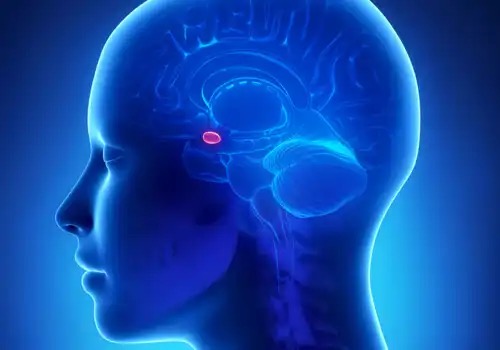Scientists developed biologism in response to the 19th-century syphilis pandemic. Ever since then, they’ve been debating to what extent the environment and genetics play a role in psychopathology. In other words, do you acquire a mental condition due to your genes? Or is it due to your environment? We need to consider the role of both genetics and epigenetics to answer these questions.
Many suggest that both the environment and genes are responsible for the development of a psychopathological disorder. Is this true? If so, how much weight does each of them have? Could certain disorders be avoided if scientists knew the relevant genes? If a person has one particular gene, will all people with the same gene develop the same disorder?
In reality, there’s usually only one explanation given for any particular mental disorder. However, this is a mistake, as there are many variables and protective and risk factors. For this reason, a one-dimensional perspective isn’t appropriate.
As a matter of fact, mental disorders occur due to many factors. These all combine with one another. They’re biological, psychological, and social. No influence acts on its own.
The difference between genetics and epigenetics
We all know how our genes influence our behavior. However, we may not know how our environment influences our genes.
Epigenetics studies the mechanisms that determine whether or not a gene expresses itself. In fact, some people have many genes they never express. Nevertheless, other people do express them.
Epigenetics studies the environment to find out what causes a gene to express itself. Psychopathology is interested in the relationship between the gene and its environment. This is the phenotype.
The Human Genome Project and schizophrenia
We can’t deny the role of genetics in mental disorders. In fact, genetic factors could explain up to 50 percent of cases of mental illness.
However, not all people with similar genetic make-ups develop mental disorders. Furthermore, not all people with any given mental disorder have the same genetic make-up. This is difficult to explain.
Schizophrenia is the mental disorder with the most genetic variance, 50 percent. Other disorders have a smaller genetic variance.
The Human Genome Project found 108 genes linked to schizophrenia. However, none of them were responsive, pathognomonic, or specific. In addition, none of them had a predictive or diagnostic value. Not only people with schizophrenia have these genes. In fact, we also find them in people with bipolar disorder.
At best, only 22 percent of the people who’d suffer from schizophrenia had these 108 genes. The rest of the people who ended up suffering from schizophrenia didn’t have them.
Variables that cause a gene to express itself
Epigenetics doesn’t change your DNA sequence. However, it varies the way in which you express your genes.
Whether you express your genes or not depends on certain biochemical conditions. These are influenced by your environment. Early experiences can lead to lasting epigenetic memories. In some cases, these pose an increased risk of the development of a mental disorder.
For example, children who grow up in orphanages tend to have worse adaptation and anxiety responses. They don’t necessarily suffer from anxiety. However, their early experiences have increased the risk of it occurring at some point. We call these epigenetic marks.
Bentall finished a study in 2012 after 30 years of research. He concluded that children who suffered trauma before the age of 16 were three times more likely to suffer psychotic experiences.
Trauma seems to generate epigenetic marks that favor the subsequent appearance of symptoms. Neglect, abuse, and mistreatment are all predictors of mental disorders, especially schizophrenia. This is because they favor the expression of certain genes.
The role of neurotransmitters in mental disorders
It’s often said that depression is caused by a chemical imbalance, Furthermore, with a shot of serotonin in the bloodstream, that depression would disappear within hours. However, as is the case with genetic theories, this kind of hypothesis is far too simplistic.
In mental disorders, sufferers often have an excess or a deficit of neurotransmitters. These aren’t usually the cause of the illness, but the symptoms. For instance, in depression, people have low levels of serotonin. In anxiety, they have low levels of GABA (gamma-aminobutyric acid) and high levels of norepinephrine and glutamate. The disorders aren’t produced by any identifiable alterations in the specific structures of the brain, nor are they produced by an imbalance in these neurotransmitters.
LeDoux and the physiological influence on treatments
As we mentioned above, mental disorders are due to a mixture of many different factors related to genetics and physiological functioning. Some scientists have identified specific relevant brain circuits. Their findings greatly contribute to the development of the field of psychopathology.
One example is LeDoux, an American neuroscientist. He identified a fast or direct pathway between the thalamus and the amygdala. This pathway allows certain emotions to bypass the conscious focus.
Between the thalamus and the amygdala, new episodic memories are formed. Le Doux identified two sensory pathways between the thalamus and the amygdala for the processing of information. These two pathways are highly adaptive. One is for the alarm response and it deals with threats. The other is slower and deals with highly processed information. The connections between the amygdala and the cortex are asymmetrical. Towards the amygdala, the connections are pretty weak. However, towards the cortex, the pathways are much stronger.
These weak pathways from the cortex to the amygdala mean that, in the treatment of phobias, therapists don’t find cognitive restructuring particularly useful. For this reason, they consider systematic exposure or desensitization more effective. However, when the stimulus is of a social nature, (phobia of planes or public speaking, for example), they find a rational response more useful.
This is a clear example of how brain structure influences the development of disorders. Above all, it influences the treatments to be used. This influence is bi-directional.

Insel’s study with primates
Insel conducted a study to discover the effect of the environment on gene expression. He used two groups of monkeys. One group had control over their environmental conditions and the other group didn’t. Insel administered benzodiazepine agonist (GABA) to both groups.
Both groups reacted with aggression, as opposed to fear or anxiety. However, the controlled group showed more aggression. These monkeys were all genetically identical. Only their environmental conditions were different. These results suggest that learning history determines the effect or role of a neurotransmitter. In this case, GABA.
Conclusion
In the light of the above information, we can conclude the following:
- A genetic predisposition, no matter how predominant it is, may never be expressed unless a person is exposed to a certain environment.
- Neurotransmitters play a role in disorders. However, they don’t produce them.
- The effects of learning history are determinants for neurobiological relationships that facilitate mental disorders.
Epigenetics: Can Tragedies be Inherited?
The post Genetics and Epigenetics and Mental Illness appeared first on Exploring your mind.


















Comments